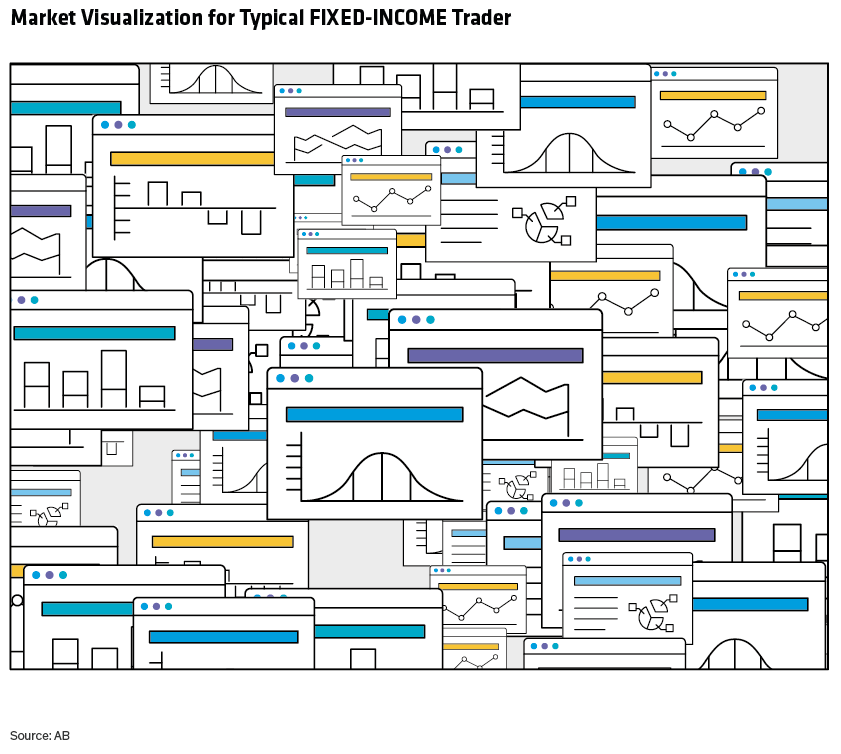But ladders bring into the equation what municipal bond funds are typically built to avoid—hidden risk and volatility.
Invest for Tax-Advantaged Income

Tax-favorable income treatment is one of municipal bonds funds’ most appealing characteristics. Income paid to investors by most municipal bonds is exempt from federal income taxes, and in many cases state income taxes, depending on the investors’ state of residence.
This characteristic may be particularly attractive for clients in higher tax brackets and in higher-tax states who seek income from their portfolios while reducing their tax profile in taxable accounts. For income-oriented clients, the steady tax-exempt payments from muni bond strategies can be an effective income generator.
Because muni bonds rarely default, they can also be a good option for risk-averse investors, including those looking for a strong fixed-income foundation to shore up their portfolios and help offset volatility from their equity allocation.
Some municipal bond funds also offer clients flexibility in adapting to the ever-evolving market landscape. For example, shifting some muni bond exposure into taxable bonds can help manage volatility when markets are rattled. Also, the ability to tap into higher-yielding municipal bonds can add incremental income without adding to the risk from rising interest rates.
Tax-favorable income treatment is one of municipal bonds funds’ most appealing characteristics. Income paid to investors by most municipal bonds is exempt from federal income taxes, and in many cases state income taxes, depending on the investors’ state of residence.
This characteristic may be particularly attractive for clients in higher tax brackets and in higher-tax states who seek income from their portfolios while reducing their tax profile in taxable accounts. For income-oriented clients, the steady tax-exempt payments from muni bond strategies can be an effective income generator.
Because muni bonds rarely default, they can also be a good option for risk-averse investors, including those looking for a strong fixed-income foundation to shore up their portfolios and help offset volatility from their equity allocation.
Some municipal bond funds also offer clients flexibility in adapting to the ever-evolving market landscape. For example, shifting some muni bond exposure into taxable bonds can help manage volatility when markets are rattled. Also, the ability to tap into higher-yielding municipal bonds can add incremental income without adding to the risk from rising interest rates.
Municipal bonds are worth consideration as a strategic exposure for clients seeking steady income with favorable tax treatment at the federal—and often state—level. But clients have diverse investment needs and tax situations, so municipal bond funds must be adaptable in order to weather different market environments and respond to new risks and opportunities.
Rising interest rates are a key concern for financial advisors and their clients. When rates rise, many portfolios face headwinds, which can spur phone calls from anxious clients—and possibly demands to move bond exposure to the sidelines and into cash. The good news: municipal bond funds have actually rebounded surprisingly quickly from sharp interest rate increases, thanks to the power of higher yields and time.
Higher inflation is making the headlines today, so clients may be looking for ways to protect their interests in inflationary environments. A number of inflation protection tools are available, but not all of them are easy to access or tax-efficient. Combining municipal bonds with an inflation swap based on the consumer price index (CPI) may enable investors to enjoy both tax-exempt municipal bond income and CPI swap gains taxable at capital-gains rates, not at higher income-tax rates.
Investors seeking to incorporate environmental, social and governance (ESG) considerations in their portfolios can also find municipal bond strategies that fit the bill—with several approaches that appeal to different objectives and preferences. For example, municipal bond strategies may integrate ESG factors as they assess risk and return potential, or they can apply ESG screening, which enables investors to avoid specific securities that don’t align with their personal values. Finally, a municipal bond impact strategy intentionally invests in issuers that support progress on social and environmental issues.
Passive muni bond ladders are designed with bonds spaced evenly across maturities and reinvested as they mature. They’re simple to build and maintain, provide relatively certain return, and gradually capture higher yields to provide some protection as rates rise.
For one thing, ladders may actually increase risk, because they sometimes include bonds with lower credit quality or longer duration as a way to boost lower yields. Incorporating these securities increases credit risk and interest-rate risk, respectively, which can mean unmonitored risk in a passively managed portfolio.
The urge to boost the yield of laddered portfolios is understandable, given that investors are likely to be disappointed by the lower yields that are locked in. That structure gives investors little chance to beat even a modest rate of inflation. Passive muni bond ladders may also take a while to show investors any meaningful benefits.
With actively managed municipal bond funds, on the other hand, managers have the flexibility to shift portfolio holdings among higher-quality municipal bonds, taxable bonds and municipal credit as after-tax yields and opportunities change. Given the ever-changing nature of the municipal bond market, investors should seek to stay nimble, not locked in.
Regardless of market conditions, actively managed municipal bond funds give investors exposure to multiple sources of after-tax income and return potential. They may also deliver greater liquidity, diversification and risk management capability.
Municipal bond strategies that have the ability to tap into credit sectors can take advantage of these higher-yielding opportunities. So can strategies with the flexibility to shift into taxable bond market opportunities when they offer attractive return potential relative to the municipal bond market.
But the municipal market has changed a lot in the past 20 years, and many muni bond managers may still run their strategies like it’s 2000. Success in the modern municipal bond market, with its complex and fragmented nature, requires a foundation of highly integrated trading, portfolio construction and management.

A tech-empowered approach to muni bonds can make trading more efficient, generating incremental alpha from trading. It can also take client portfolios from conception to execution faster and more efficiently—putting money to work quicker and adding what we call “speed” alpha.
Municipal bond managers seeking to wring more alpha from portfolios today should have an explicit strategy to harness technology and innovation as well as human experience and judgment in actively managed portfolios. Financial advisors should be ready to ask muni bond managers the hard questions to assess their capabilities.